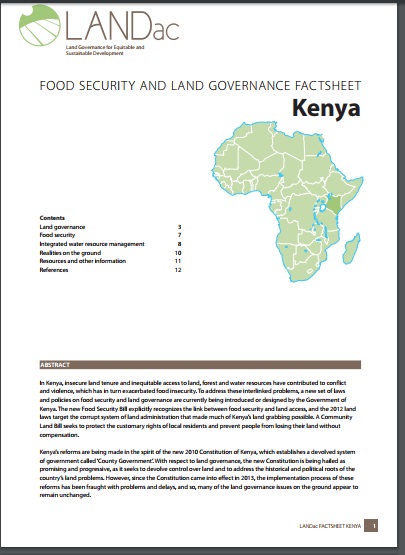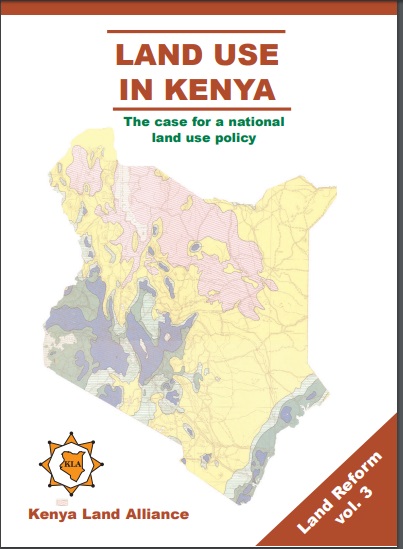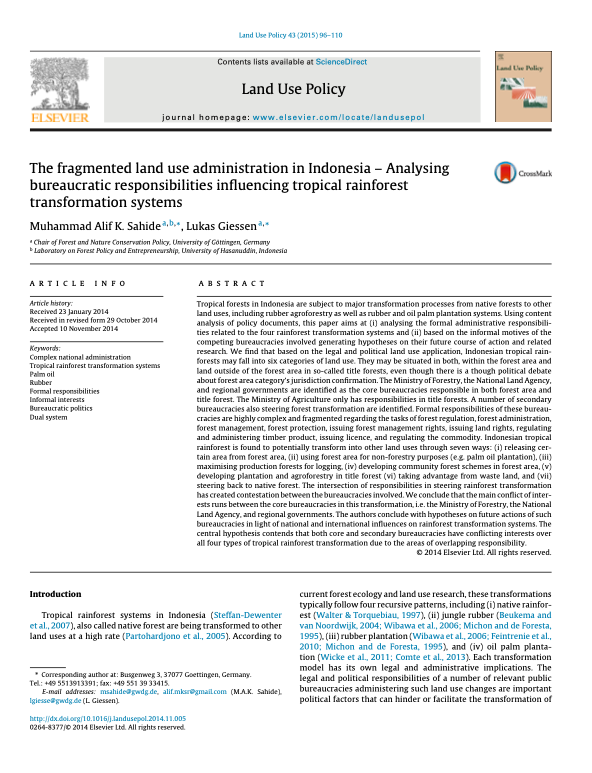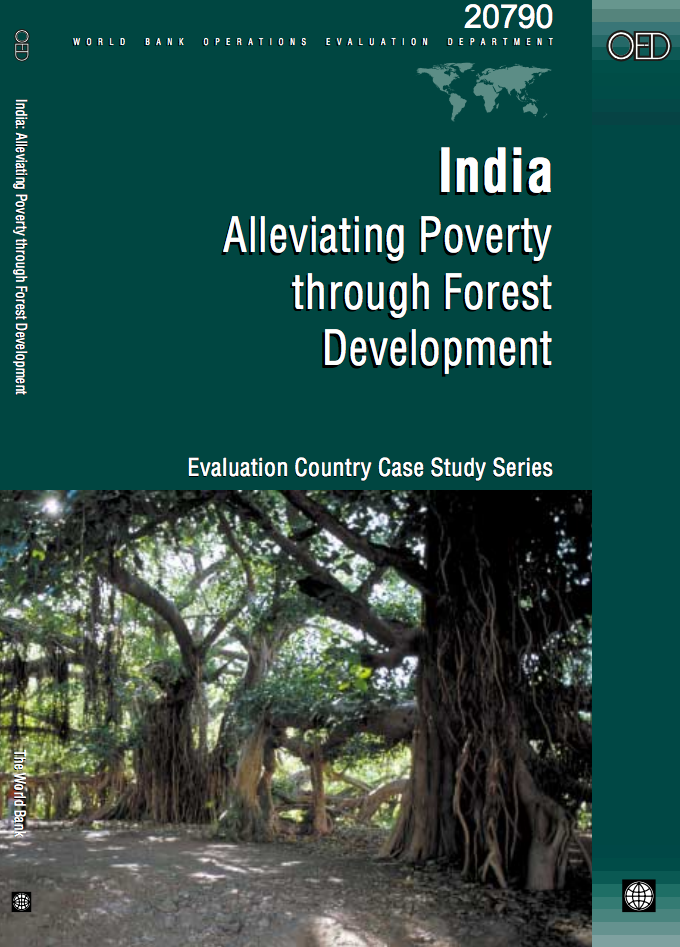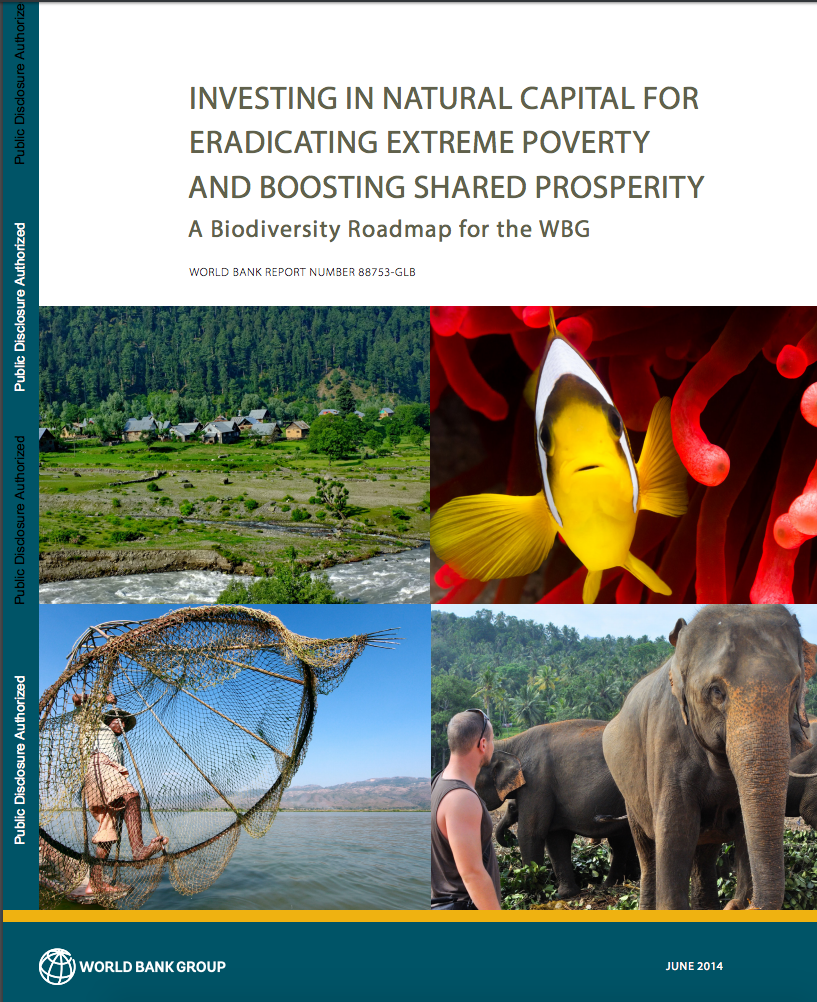Analysis of Community Forest Management in Madagascar
The major role tropical forests play in
biodiversity and climate change has led the world to search
for effective ways to slow down deforestation. Community
forest management (CFM) is an example of the broader concept
of community-based natural resources management (CBNRM). As
part of the decentralization policy in many countries,
mainly in Africa and Asia, CFM was expected to promote: (i)
a more effective stewardship of the resources by involving
Valuing Forest Products and Services in Turkey
The country’s forest areas occupy 21.7
million ha (approximately 27.6 percent of its total surface
area), and are inhabited by close to 10 percent of its total
population. The forest sector generates a variety of timber
and non-timber products and eco-services. The Turkish
government has put great effort into reforestation and
forest management, increasing the total area of forests. In
their tenth national development plan (2014-2018), the
Forest-Based Bamboo Trade in Mendha Lekha and Jamguda
This paper presents case studies of two tribal villages - Mendha Lekha and Jamguda - successfully running forest-based bamboo businesses under the community forest rights provisions of Forest Rights Act (2006). We have documented the issues faced by the villagers in claiming community forest rights, issues faced in harvesting and sale of bamboo, and business practices adopted by both the villages.
Food Security and Land Governance Factsheet Kenya
In Kenya, insecure land tenure and inequitable access to land, forest and water resources have contributed to conflict and violence, which has in turn exacerbated food insecurity. To address these interlinked problems, a new set of laws and policies on food security and land governance are currently being introduced or designed by the Government of Kenya. The new Food Security Bill explicitly recognizes the link between food security and land access, and the 2012 land laws target the corrupt system of land administration that made much of Kenya’s land grabbing possible.
Land Use in Kenya; The case for a national land-use policy
This book exposes the key land use and environmental problems facing Kenya today due to lack of an appropriate national land use policy. The publication details how the air is increasingly being polluted, the water systems are diminishing in quantity and deteriorating in quality. The desertification process threatens the land and its cover. The soils are being eroded leading to siltation of the ocean and lakes. The forests are being depleted with impunity thus destroying the water catchments.
The fragmented land use administration in Indonesia
Tropical forests in Indonesia are subject to major transformation processes from native forests to other land uses, including rubber agroforestry as well as rubber and oil palm plantation systems. Using content analysis of policy documents, this paper aims at (i) analysing the formal administrative responsibilities related to the four rainforest transformation systems and (ii) based on the informal motives of the competing bureaucracies involved generating hypotheses on their future course of action and related research.
Republic of Moldova Forest Policy Note
This forest policy note (FPN) offers
an outside view of the Moldovan forestry sector, provides
some strategic guidance to help define sector goals, and
identifies opportunities for consideration in the continued
development of the sector and for the implementation of the
Moldova and World Bank (WB) country partnership strategy
(CPS). This study is based on a number of short visits to
Moldova and on a number of background studies undertaken
India : Alleviating Poverty through Forest Development
This case study, one of six evaluations
in a series of country case studies, aims to understand the
implementation of the 1991 Forest Strategy in World Bank
operations and to obtain the views of the various
stakeholders in the country about the involvement of the
Bank. Each country study examines the overall development of
the country's forest sector. This naturally includes
the environmental impacts on forests, such as degradation,
Investing in Natural Capital for Eradicating Extreme Poverty and Boosting Shared Prosperity : A Biodiversity Roadmap for the WBG
The World Bank Group (WBG) has a long
experience in engaging in biodiversity with world-class
expertise in the field. It has been the single largest
funder of biodiversity investments since the late 1980s. The
WBG investments have largely been of two kinds: (1)
investments in biodiversity, aimed at the conservation and
sustainable use of species, habitats, and ecosystems that
sustain healthy ecosystems, while enhancing people's
Managing the Miombo Woodlands of Southern Africa : Policies, Incentives and Options for the Rural Poor, Volume 1. Main Report
Miombo woodlands stretch across Southern
Africa in a belt from Angola and the Democratic Republic of
Congo (DRC) in the west to Mozambique in the east. The
miombo region covers an area of around 2.4 million km. In
some areas, miombo has been highly degraded as a result of
human use (southern Malawi and parts of Zimbabwe), while in
others, it remains relatively intact (such as in parts of
northern Mozambique, and in isolated areas of Angola and the




